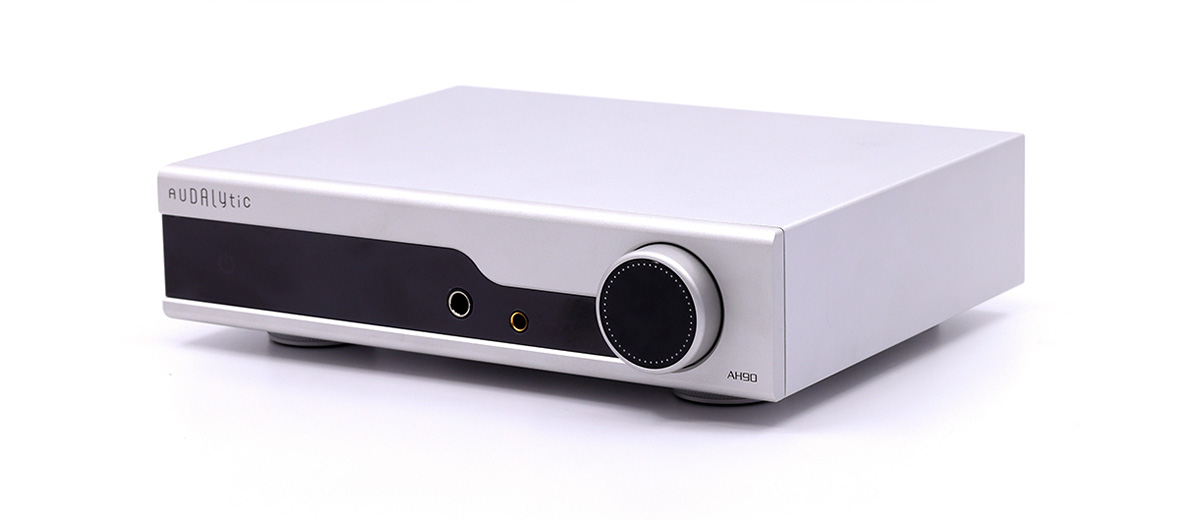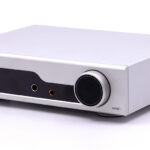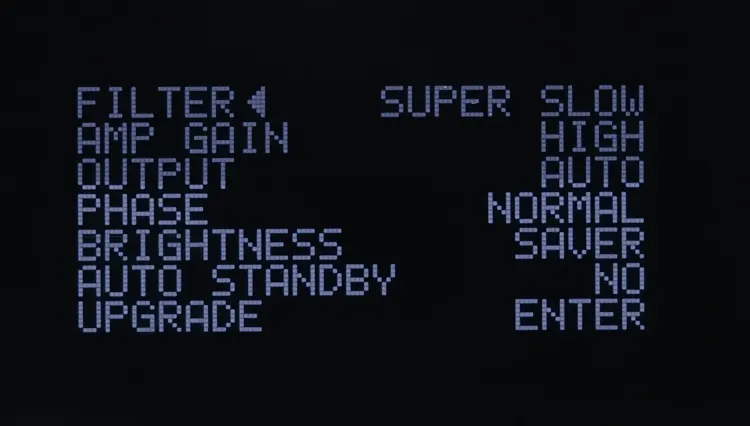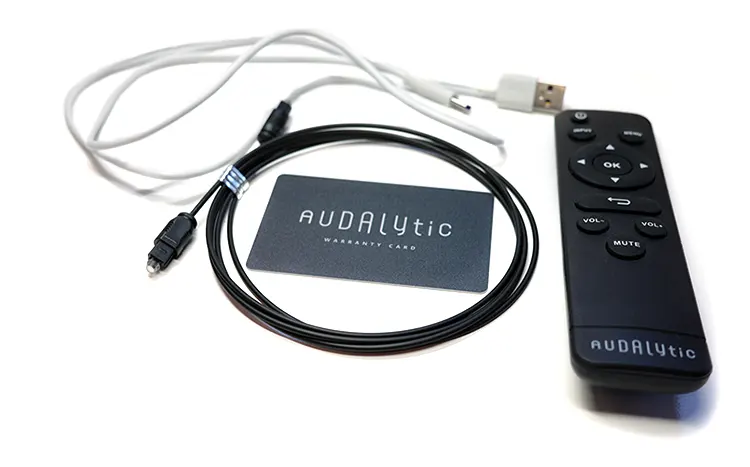Today, we review the Audalytic AH90, which is a new desktop AK4191+AK4499-equipped desktop DAC and 1W-capable balanced headphone amplifier. It is priced at $599.99.
Disclaimer: This was sent to us as a sample for our honest opinion. Headfonics is an independent website with no affiliate links or services. We thank Shenzhen Audio, Audalytic, and Gustard for their support.
To read more about Gustard products we have previously featured on Headfonics click here.
Note, that this article follows our latest scoring guidelines which you can read here.
As an in-house company from Gustard, Audalytic can present the company’s latest technology at an affordable price.
Using much of the same internal componentry as the A26 pure DAC, (with a family resemblance to the R26 as well), the AH90 carries the AK4499EX DAC and AK4191EQ modulator chips similar to the A26.
The AH90 is the first foray for Gustard into the mid-tier DAC/streamer/headphone amplifier world and carries many of the necessary goods to provide the listener with multiple hook-up and listening options.
How does it perform as a streamer and headphone amplifier? We found out in our in-depth review and comparisons.
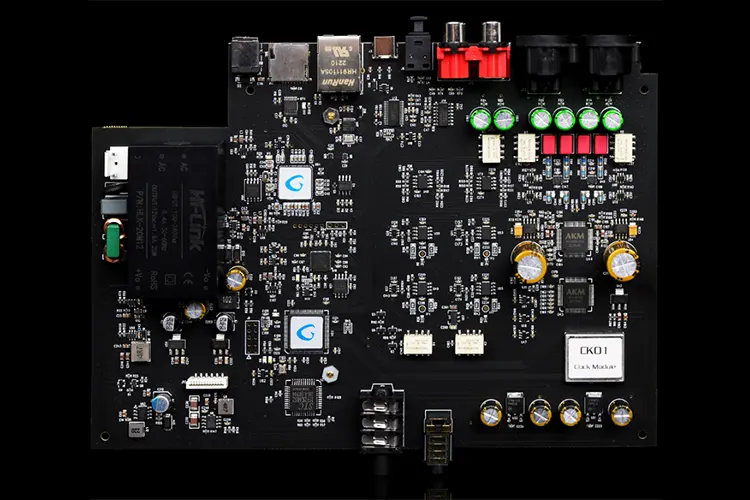
Tech Highlights
DAC
The Audalytic AH90 is a standalone midrange desktop DAC and uses the latest AKM AK4499EX DAC and AK4191EQ modulator chipset which separates digital and analog circuitry we well as isolates the signal from external interferences.
With a third-generation 16-core XMOS XU316 USB interface, (similar to the FiiO R9 we recently reviewed), the AH90’s USB-C decoding supports high-resolution audio streams of up to PCM 32BIT/768 kHz, native DSD512, and MQA 8x.
The combination allows for better control using the CK01 clock module and FS jitter oscillators. The FPGA architecture provides precise signal routing phase loop locking, DOP decoding, and a PCM-DSD silent switch, concerning stability in the signal flow, digitally speaking.
Combined, this presents a clear sound with accurate decoding; which translates into a smooth, accurate signature.
Streaming
The AH90 is also a network streamer, supporting Roon Bridge (based around the Gustarender), UPnP, HQ Player, Spotify, Tidal, and Airplay streaming functions through either the LAN connection or directly from the source connected. More protocols will be added in the future with the brand support.
There are no native apps though and must be used on the source side. Settings can be tuned for the Gustarender using your PC according to reports (I did not modify the settings at all).
The multiple connecting options make for a thorough streaming experience, though, even without WiFi or Bluetooth.
Amplification
The Audalytic AH90 features headphone output supporting both single-ended and balanced headphones, using the 6.35mm single-ended and 4.4mm balanced headphone ports.
The output provides 1W maximum at 32Ω (from 64Ω down) through the balanced connection and 200mW at 300Ω. Not earth-shattering, but very adequate for the 4.4mm balanced port.
Power is provided through 2 OPA1612 bipolar-input Op-Amps, using Burr Brown Texas Instrument technology. With rail-to-rail output swings to within 600 mV on a 2-kΩ load, this increases headroom, while maximizing dynamic range.
The typical Burr Brown sound signature of smoothness pervades the AH90 as a result. The small size helps to keep the circuitry diminutive within the AH90.
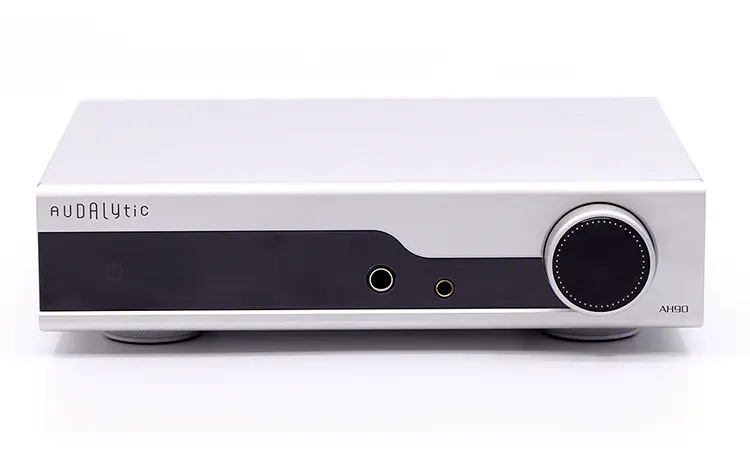
Design
The AH90 comes in either silver or black, with a curved glass insert. While I asked for black, the silver was shipped, and I am glad it was.
To me, the silver shows the shape off better, and is easier to read the LCD; along with the other functions. It has a design similar to the Gustard A26 and R26 (curved glass effect) and comes across with a diminutive footprint. The unit measures 220mm x 170mm x 50mm with a minimal 2kg weight.
A large knob dominates the right side of the front, but other than the touch-sensitive on/off “button” that knob controls all features. The use of the knob was direct and without any faults or construction snafus. The design is elegant and functional yet carries a modern look to it as well.
The AH90 can easily slip under your desktop monitor, or next to your system, minimizing its presence while doing so.
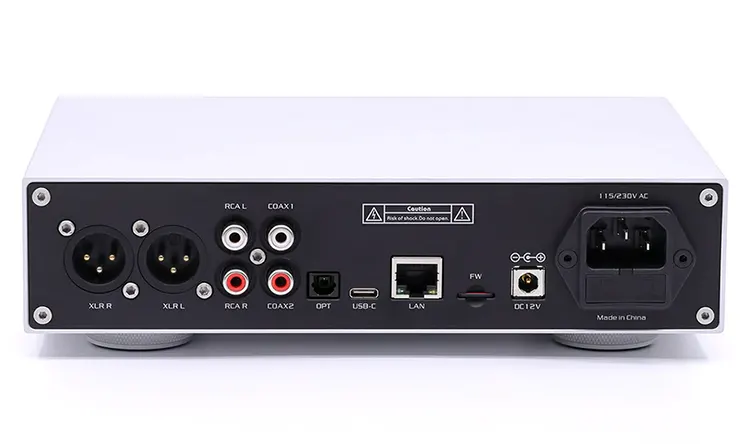
I/O
The front of the sleek, silver face carries a touch-sensitive power button, an OLED brightness adjustable screen, 6.35mm single-ended & 4.4mm balanced jacks, and the large volume/function knob from left to right.
The screen is of good size but meant for close-up viewing. Letters are large enough to discern with ease, except when in the sub-menu where choices are made, but Audalytic does recommend not leaving the screen on the highest brightness for long periods due to burn-in of the screen.
The back panel is chock full of input and output choices, and I for one am glad that manufacturers are taking this well-thought-out approach of including many options.
XLR Line out can be used to attach to another DAC or amplifier (or two-channel amplifier), while RCA connections allow the use of connecting to your powered speakers or two-channel system as well.
I used the RCA connections for both during my testing. The AH90 can also be used as a Roon bridge among its features. I did not test this option.
Coaxial and optical inputs allow for the inclusion of digital sources such as a CD player. I was able to hook my older Arcam CD73 up and use it for the review as well.
For those who want a WiFi hook-up, the LAN connection will have to suffice, since neither Bluetooth nor WiFi connections are available. The USB-C input can successfully connect your DAP or Smartphone with Line Out volume control. This is an automatic setting, but some DAPs still warn of the increase in volume.
An included FW micro-SD card slot rounds out the back along with a DC12V-15V connection for an external power connection. The firmware is sideloaded via the micro-SD slot. The latest firmware came pre-installed.
Controls
When an adjustment is made to volume or another function, the screen temporarily brightens up, noting the change. This is a handy feature, ensuring your “adjustment” has been properly initiated. The screen also fades to whatever level you set in about 30 seconds, afterwards.
The multi-function knob is controlled by pushing the black center (or silver ring) for source choices, and long pressing to access the multitude of other functions available. There was a slight pause in the music when returning to the main screen (on some sources), instituting the changes you have made.
I like the ease of use, but getting used to the long press for functions took a bit of getting used to, and I often changed sources erroneously, which led to having to restart the music app I was using (both Tidal and Qobuz).
Pressing the power button while on will mute the volume; which can be useful for conversations. A long press turns the unit off. I do like that there is this “failsafe” for both knobs, but it did take a bit of time to get used to the features.
Using the included remote simplified the operation, especially with the menu button accessibility.
The multi-function menus include filter choice, amplifier gain, output, phase, brightness adjustment, auto standby, and the upgrade menu.
Included filter choices are the normal repertoire for most units of this type; and include Short Delay Sharp, Short Delay Slow, Sharp, Slow, Super Slow, and Low Dispersion Short Delay.
Packaging & Accessories
If you are coming from Gustard products the packaging is quite similar. It is a fairly generic HiFi brown slim box with a good level of foam protection for the AH90 and its accessories.
Included is a power cord, a USB-A to USB-C connecting cable, a manual, and a multi-function remote.
Sound Impressions
The Audalytic AH90 was given plenty of lead time before making sound impressions. I used it with a pair of FiiO FT3 32 ohm, and the Sony MDR-Z7 (V1, with bass mod) for approximately 75 hours, along with the UE Live IEM.
Sources used were my MacBook Pro, the Cayin N6ii, and my home two-channel system consisting of a Denon PMA-770 integrated amplifier, Arcam CD73, and Klipsch Forte speakers.
Summary
Burr Brown DACs are known for a smooth relaxing signature, and the AH90 is no different. While the sound emanating from within is indeed smooth, there is still plenty of detail wrought from the sound signal.
The Audalytic would not be considered a reference sound or full of detail, but neither is it a slouch where clarity and retrieval are concerned.
Timbre
Timbre comes across with a velvet-like smoothness in the character and a distinctly warm tone. Burr Browns are typical for this sound, but without losing detail retrieval in the process.
Distinct punctuation of note treatment gives the AH90 a somewhat vibrant character while keeping that smoothness.
While detail retrieval can pervade the senses, there is a certain lack of it overall due to the tuning. I was not left wanting for more though, as the overall signature played with that smoothness without losing grip on the intended tonality.
Staging & Dynamics
There is a certain vibrancy, which comes out on the Audalytic; giving the AH90 good dynamic range. While it neither reaches too low nor too high, I found the musical nature of the signature came across with good energy countering that smooth texture for a nicely laid-back signature.
Guitar solos came across with both alacrity and verve, promoting very competent dynamics. The 3D nature listed below helped to place instruments properly and with good realism.
While the overall stage might not have been amongst the widest, the space within gives good weight to the notes, adding to the realism of the songs.
Soundstage & Imaging
A somewhat intimate approach is taken with the AH90, instead of spaciousness.
The height of the 3D presentation affords the listener a good expanse where instrumentation can be discerned without trouble. Depth also plays into that separation of instruments, giving good weight to the notes as one would expect with this type of tuning.
As mentioned above, the way music plays within the three-dimensional space makes for an engaging signature on the warmer side of life.
The weight of the notes with just enough delay makes for a deeper richer tonality than its competitors such as the YULONG Aquila III; which is also more vibrant than the AH90.
Filter changes can add or subtract a bit to the music playing as well. But since this is owner preference, I will leave it to you for your best fit.
That 3D spatial aspect plays well across the imaging, with little effort needed to properly place the instruments in the left-right space. Depth was a bit harder to discern, but still fairly accurate, if a bit thinner in depth.
Click on page 2 below for our recommended pairings and selected comparisons.




